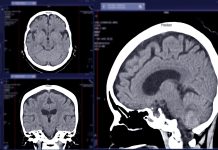Engineers at Johns Hopkins University have pioneered a method to detect molecular vibrations using quantum sensors, potentially revolutionising early disease diagnosis, industrial monitoring, and environmental surveillance
Engineers at Johns Hopkins University, under the leadership of Ishan Barman, have developed a groundbreaking class of quantum sensors. These sensors have the unique capability to detect extremely faint molecular vibrations, a feature that could revolutionise early disease detection. This innovative technology, with its unprecedented sensitivity at the molecular level, could significantly improve environmental monitoring and industrial diagnostics. The potential impact of these quantum sensors on disease detection is particularly noteworthy, as it could lead to faster and more precise detection methods, thereby marking a significant step forward in both medical and scientific applications.
The team’s findings were published today in Science Advances.
Detecting tiny vibrations with quantum sensors
The use of quantum sensors for detecting molecular vibrations could lead to earlier and more accurate detection of disease biomarkers found in blood, saliva, or urine. These molecular vibrations, which are the unique movements of atoms within a molecule, provide chemical ‘fingerprints’ that can reveal the presence of diseases ranging from infections to metabolic disorders and cancer. The process involves the quantum sensors detecting these unique movements and providing a clear indication of the presence of diseases.
Looking beyond detection methods, the quantum sensors are utilised for broader medical applications. In pharmaceutical manufacturing, they could enable real-time monitoring of complex chemical reactions to ensure product consistency and safety. In environmental science, they could allow for the trace-level detection of pollutants or hazardous compounds with unprecedented reliability. This potential opens up a world of possibilities for these quantum sensors.
Quantum vibropolaritonic sensing
In healthcare, scientists use infrared or Raman spectroscopy to detect molecular vibrations; however, these methods present fundamental limitations, including the fact that the signals they rely on are often faint, easily drowned out by background noise, and hard to isolate in complex biological environments like blood or tissue.
“We were trying to overcome a long-standing challenge in molecular sensing: how do you make optical detection of molecules more sensitive, more robust, and more adaptable to real-world conditions?” said Barman, who holds joint appointments in the Sidney Kimmel Comprehensive Cancer Center and in the Department of Radiology and Radiological Science at the Johns Hopkins School of Medicine. “Rather than trying to improve conventional methods incrementally, we asked a more radical question: What if we could re-engineer the very way light interacts with matter to create a fundamentally new kind of sensing?”
The researchers used highly reflective gold mirrors to form an optical cavity, which traps the light and “bounces” it back and forth, greatly enhancing its interaction with the enclosed molecules. The confined light field and molecular vibrations become so intertwined that they form entirely new quantum states called “vibro-polaritons.”
They were then able to mimic this under ambient, real-world conditions, without the need for high-vacuum, cryogenic, or other extreme environments, which are typically required to preserve fragile quantum states. Lead author Peng Zheng, an associate research scientist in mechanical engineering at Johns Hopkins, said this study details how to transform “quantum vibro-polaritonic sensing” from a conceptual idea into a functioning platform — and that this could lead to a new class of quantum-enabled optical sensors.
“Rather than passively detecting molecules, we can now engineer the quantum environment around them to fully enhance their optical fingerprints by utilising the quantum vibro-polaritonic states,” said Zheng.
This study marks a significant breakthrough in advancing the nascent field of ambient-condition quantum technologies. Barman envisions compact, microchip-scale devices that could bring these quantum technologies to portable, point-of-care tools and AI-powered diagnostic methods. This achievement is a testament to the potential of quantum sensing in making a real-world impact across medicine, biomanufacturing, and beyond.
“The future of quantum sensing isn’t stuck in the lab — it’s poised to make a real-world impact across medicine, biomanufacturing, and beyond,” Barman said.








